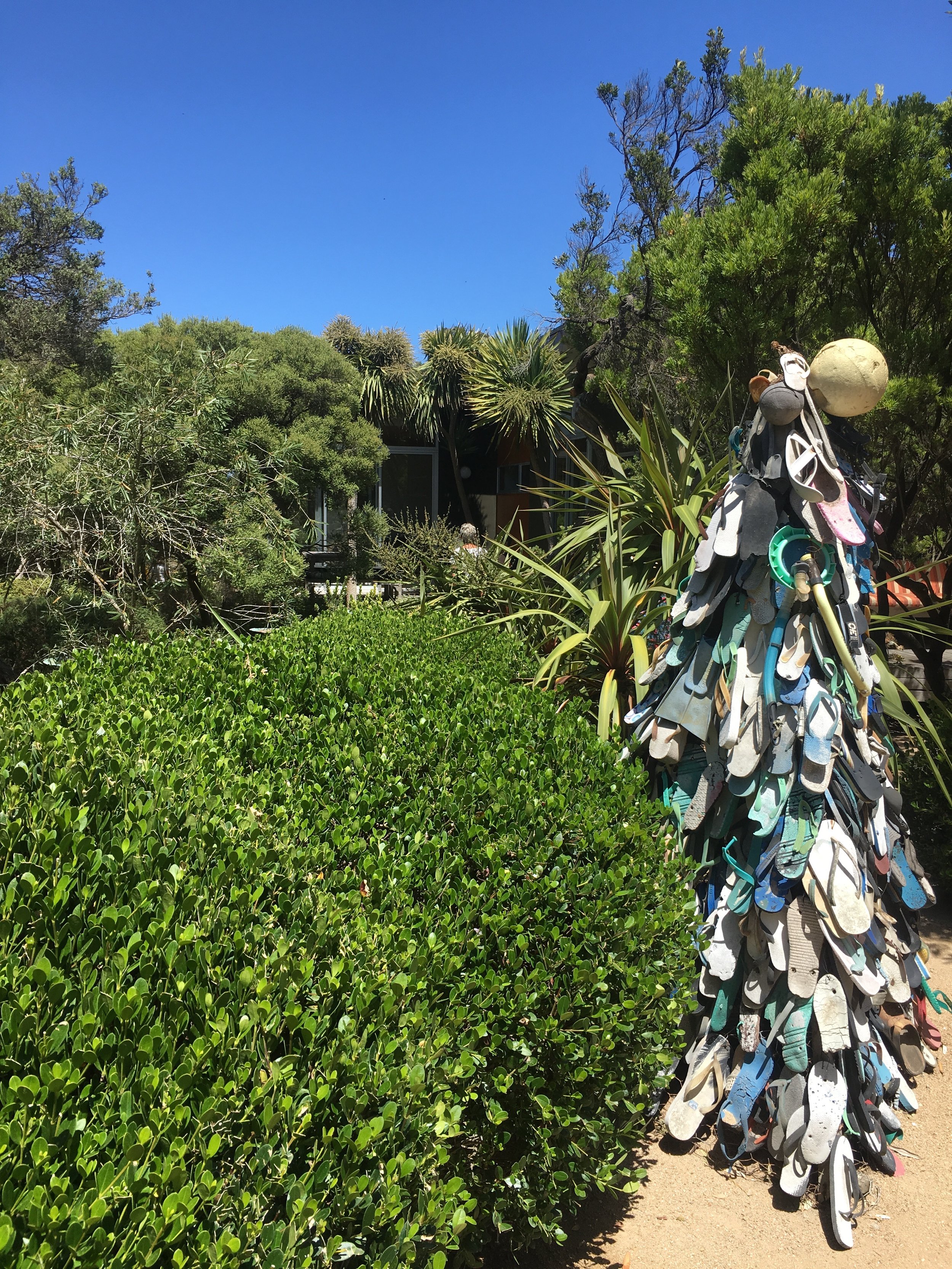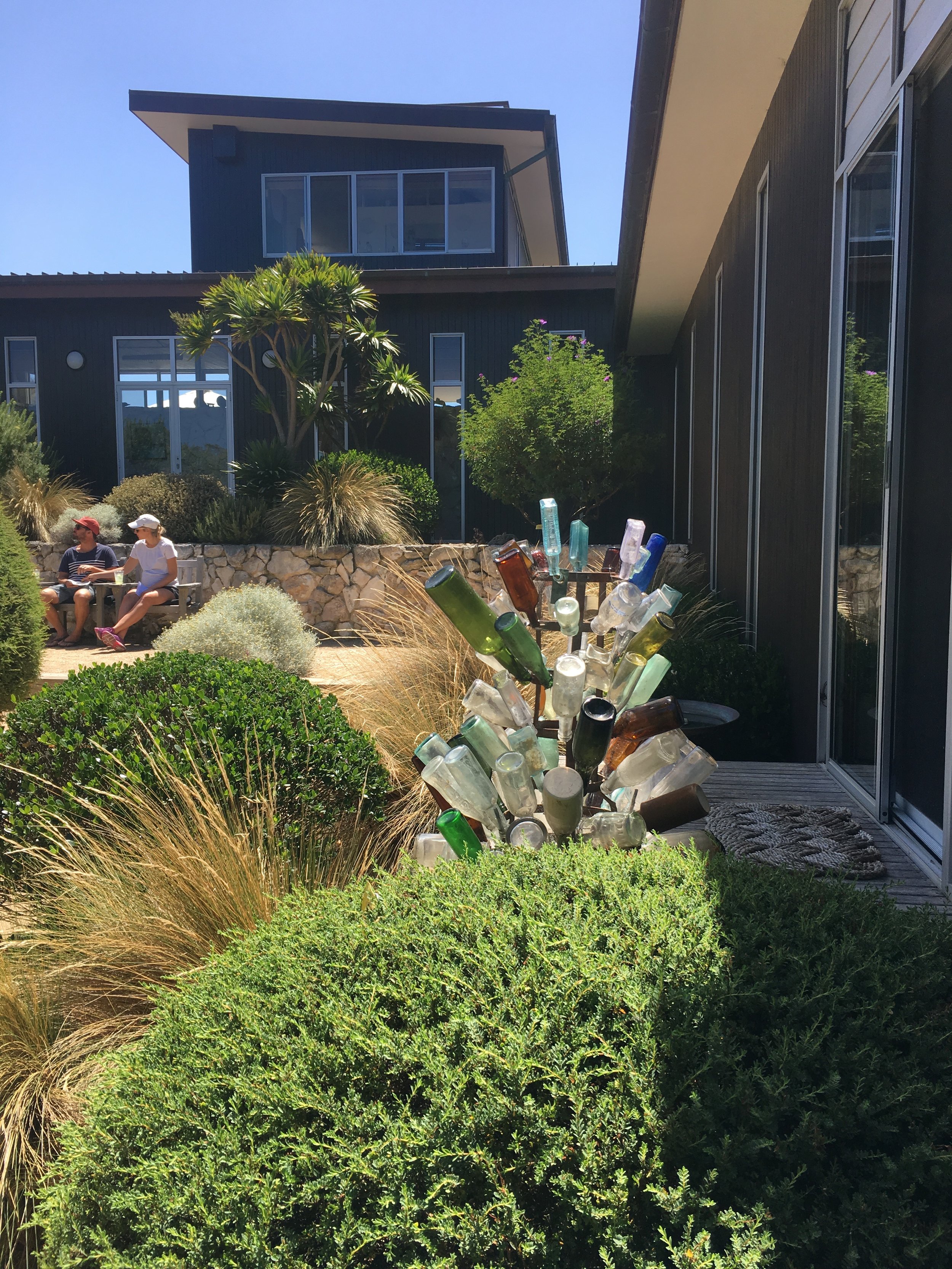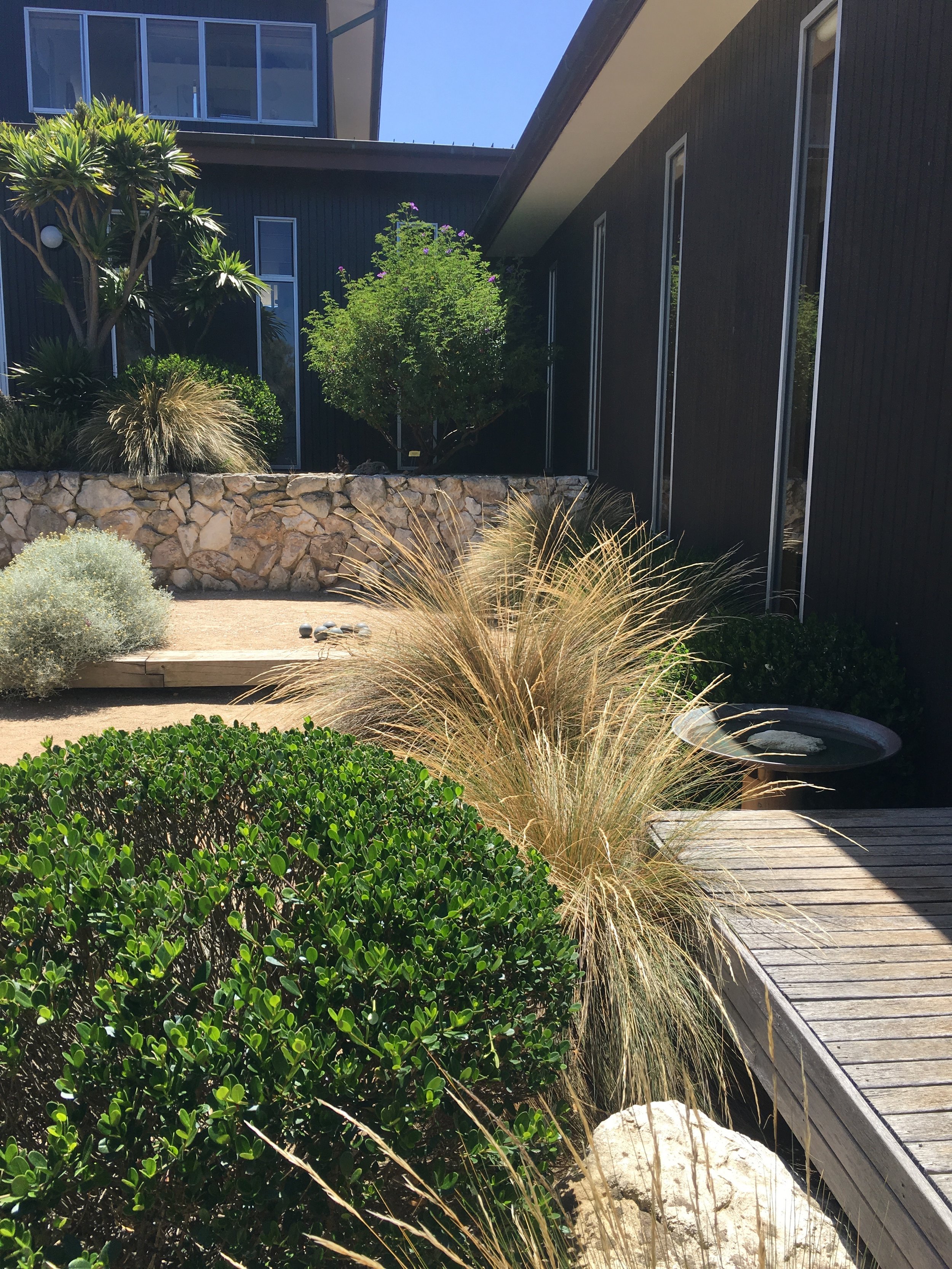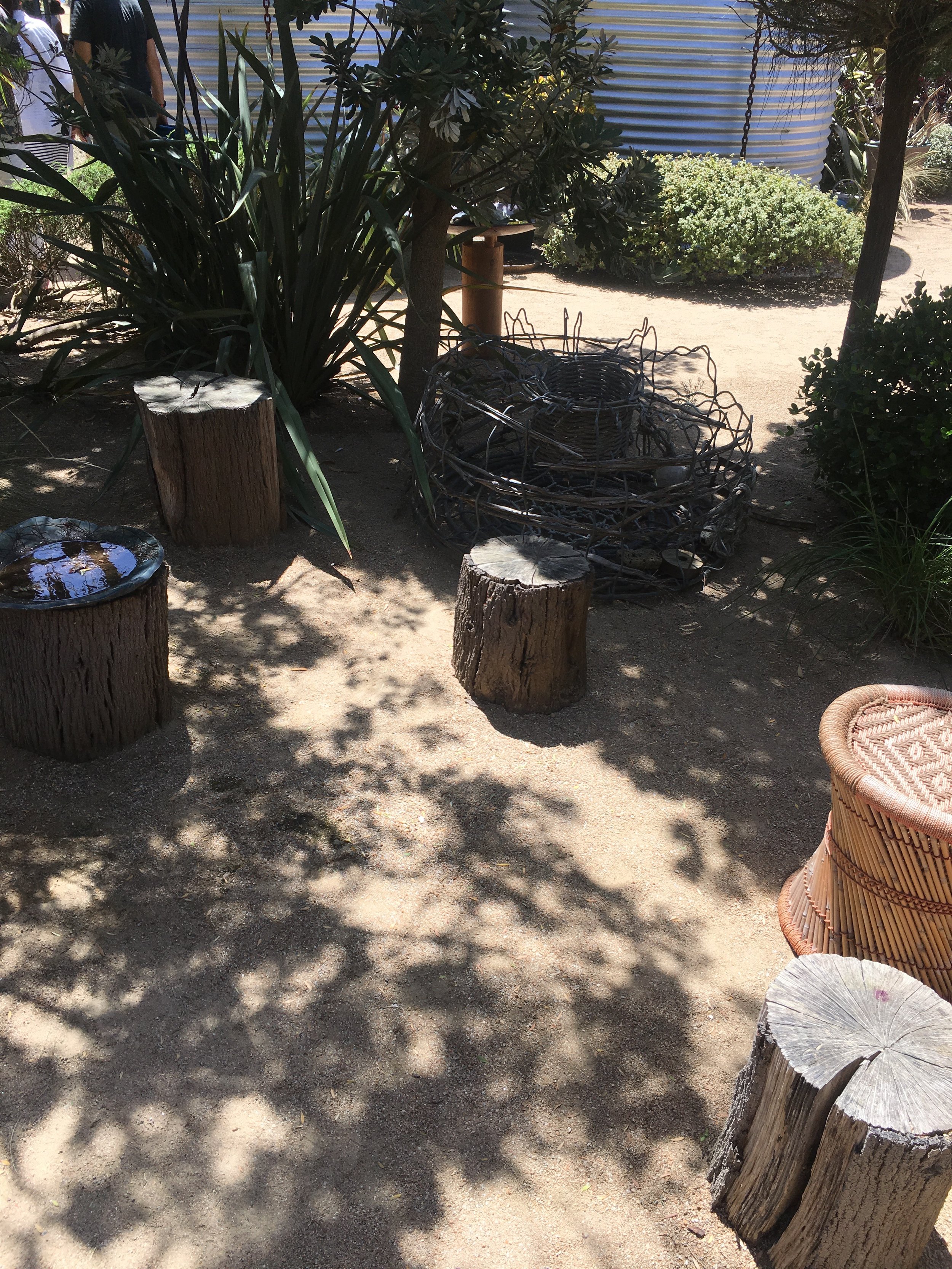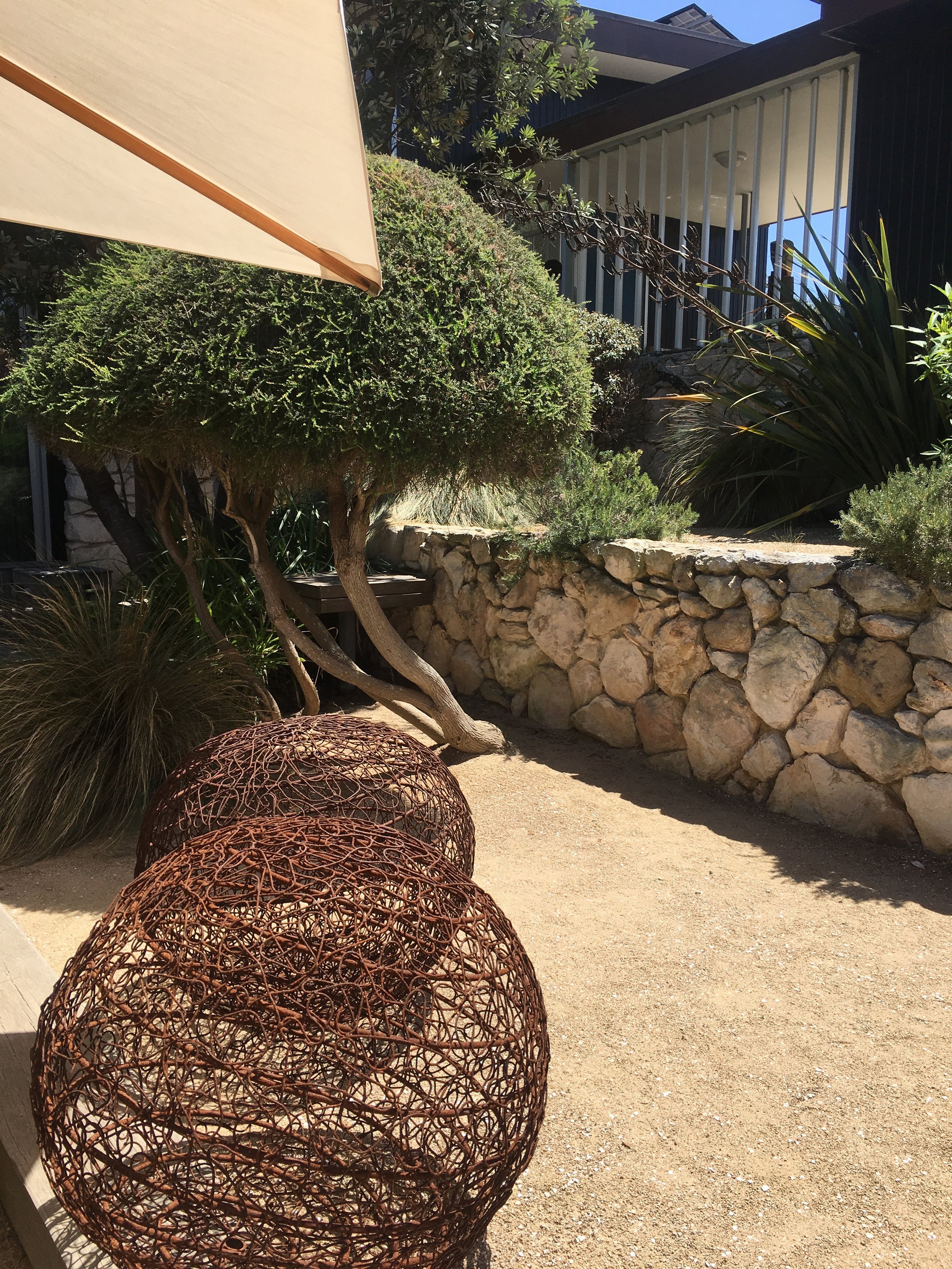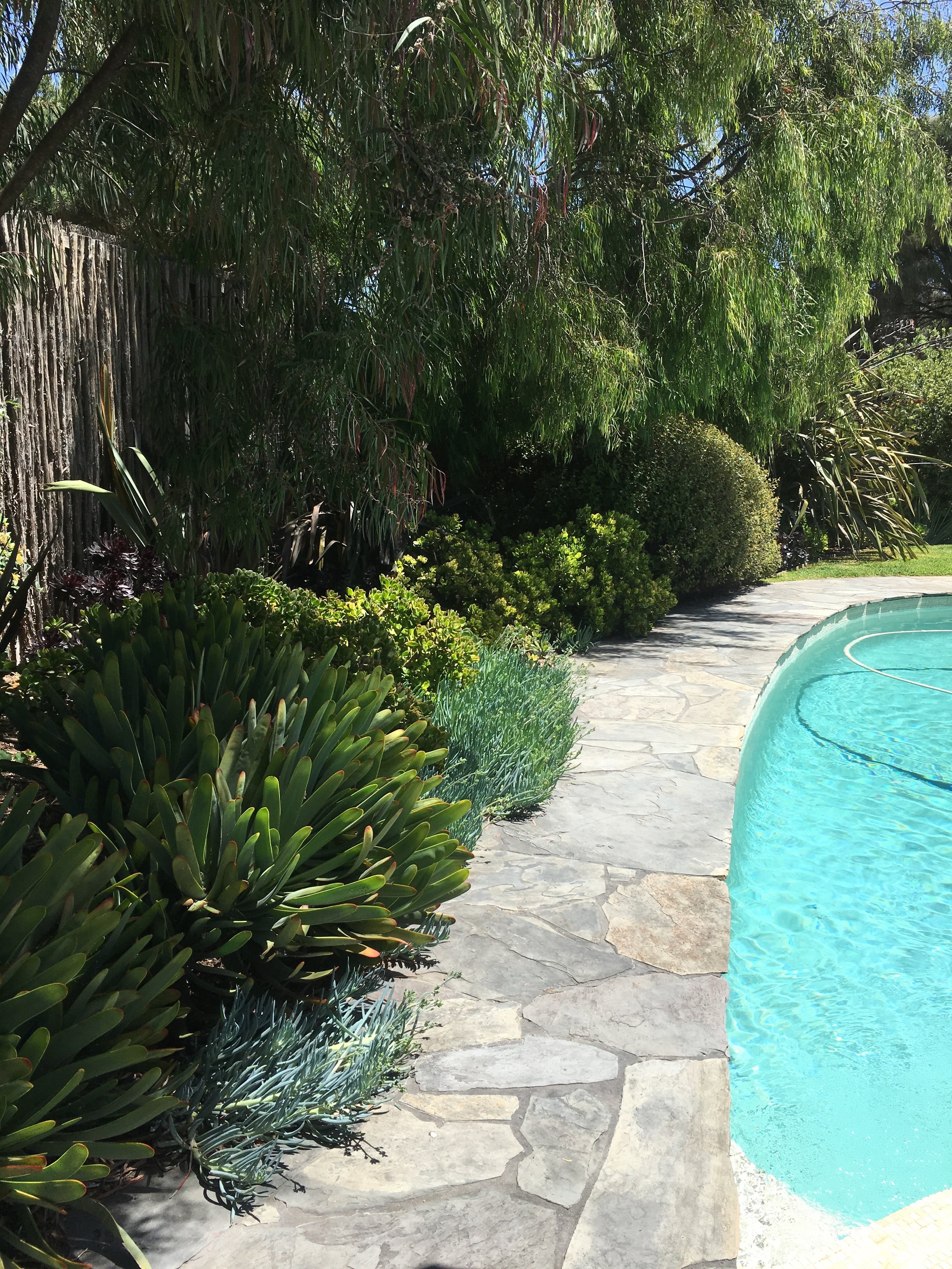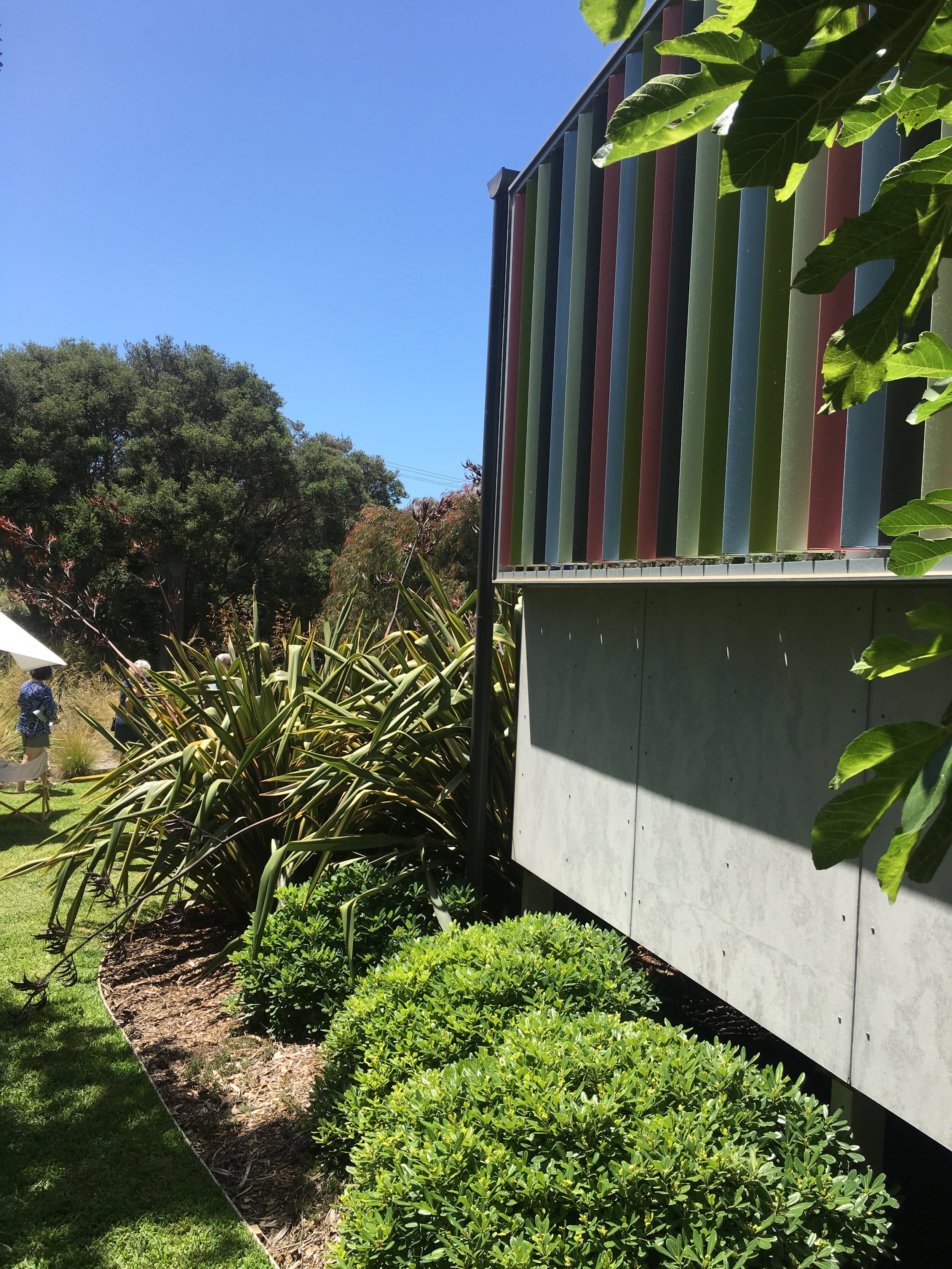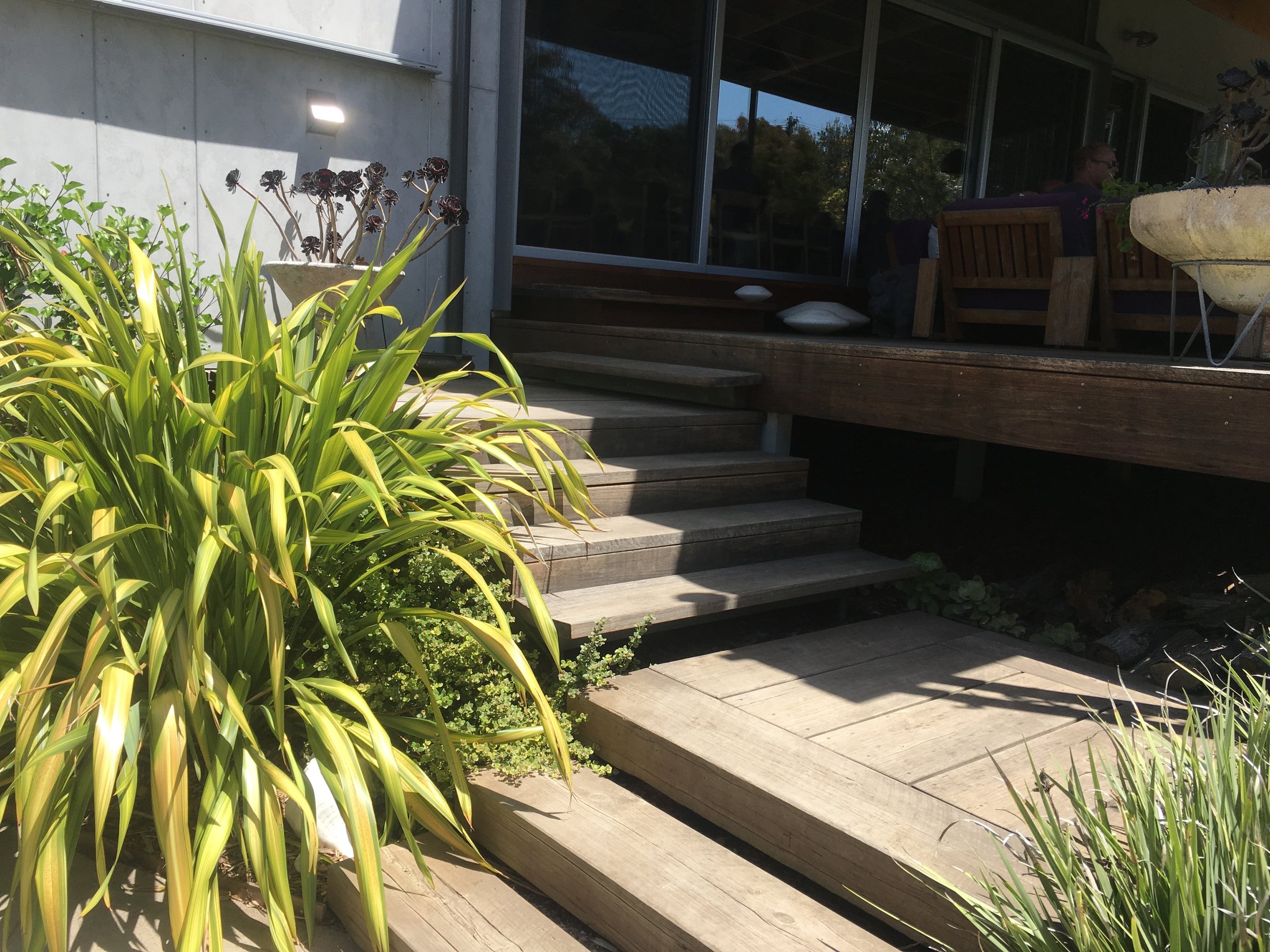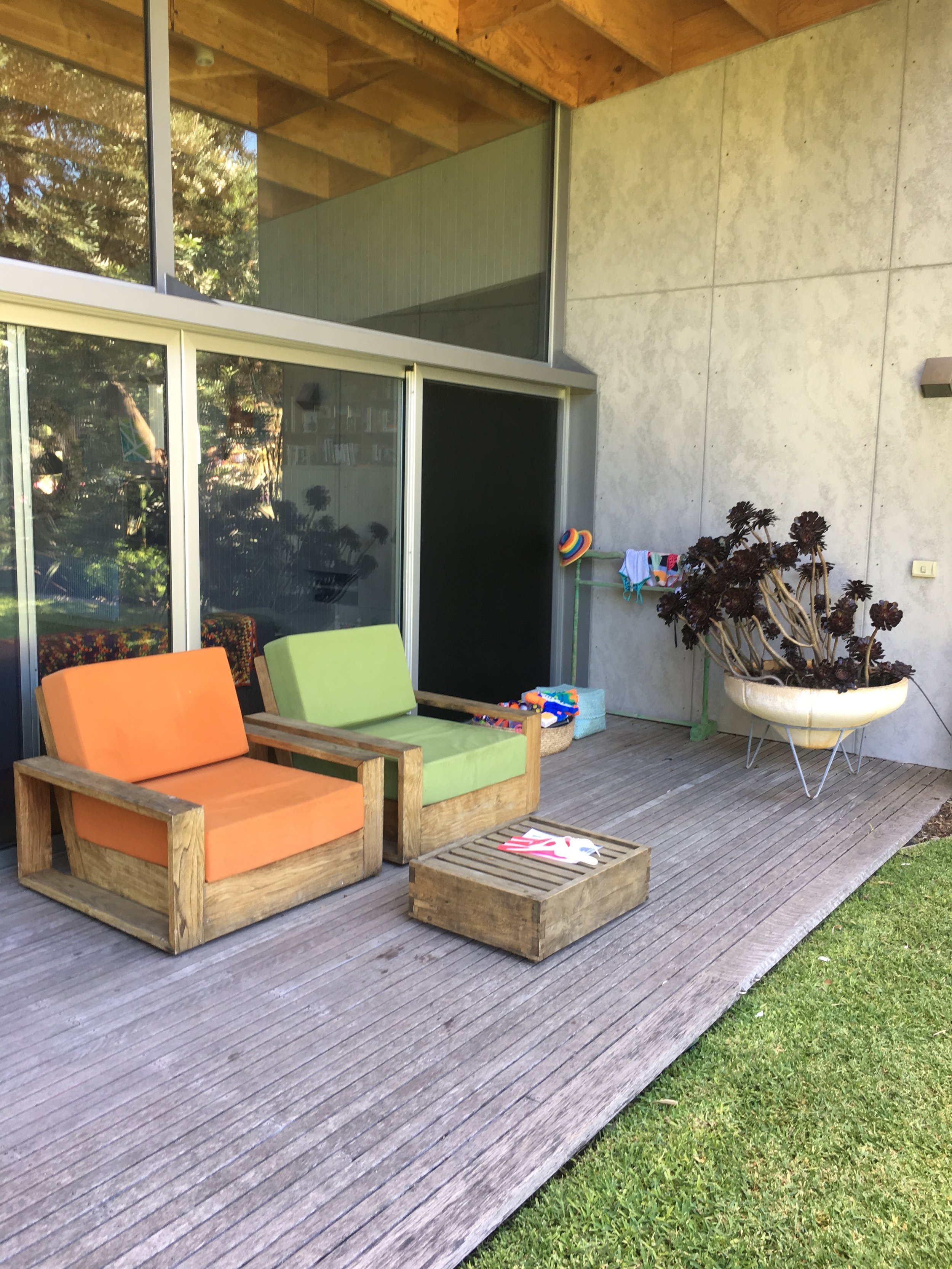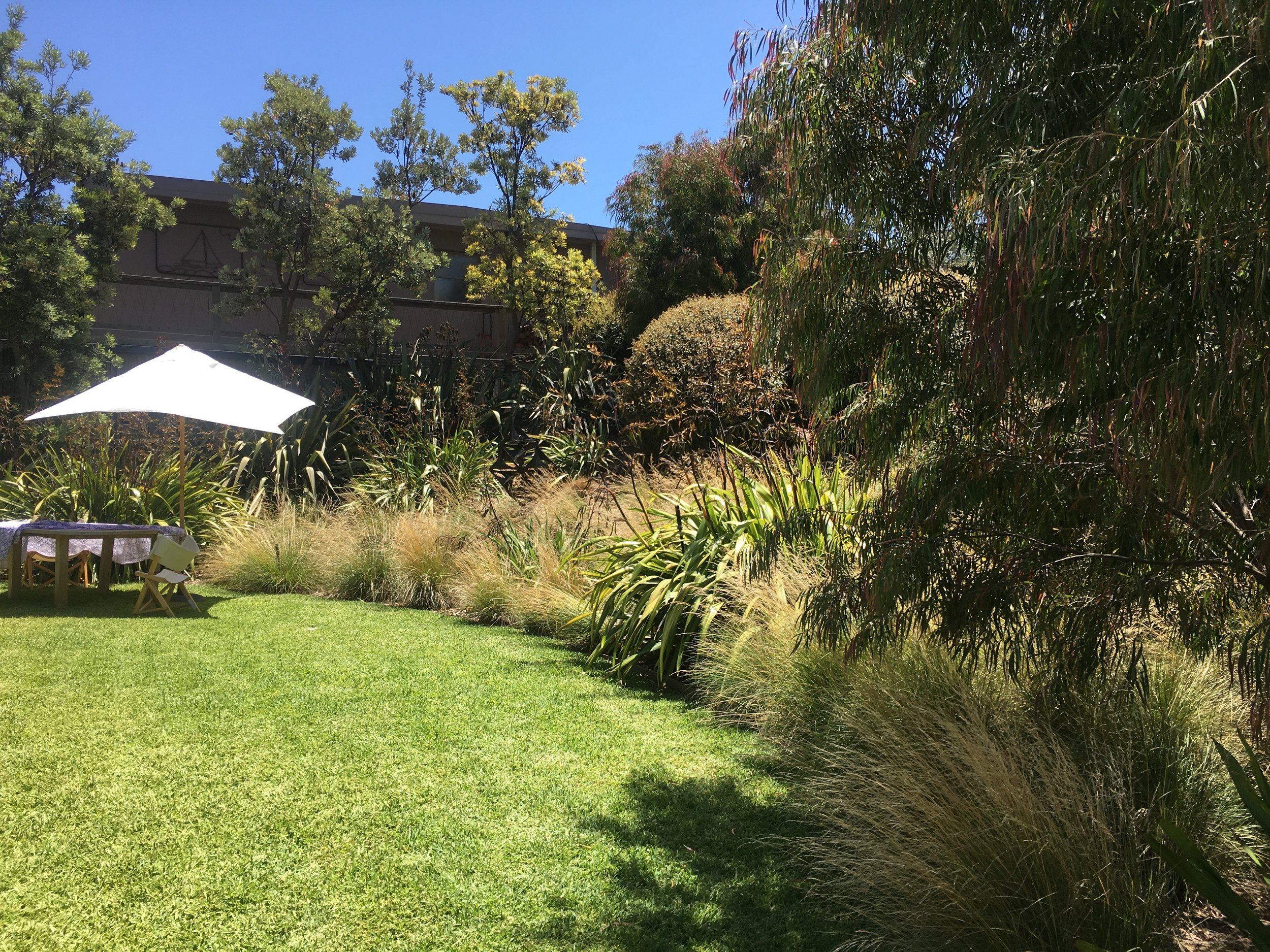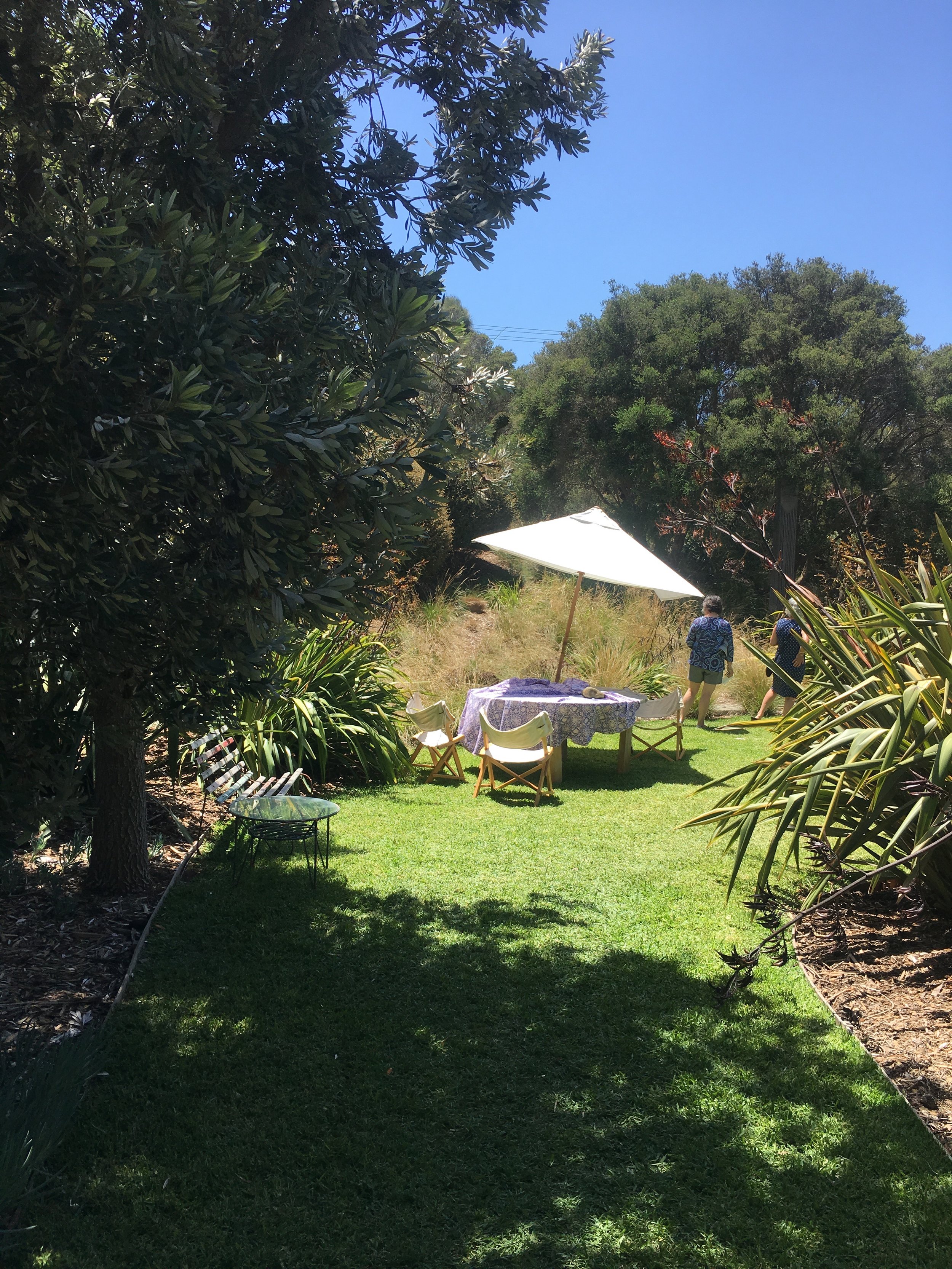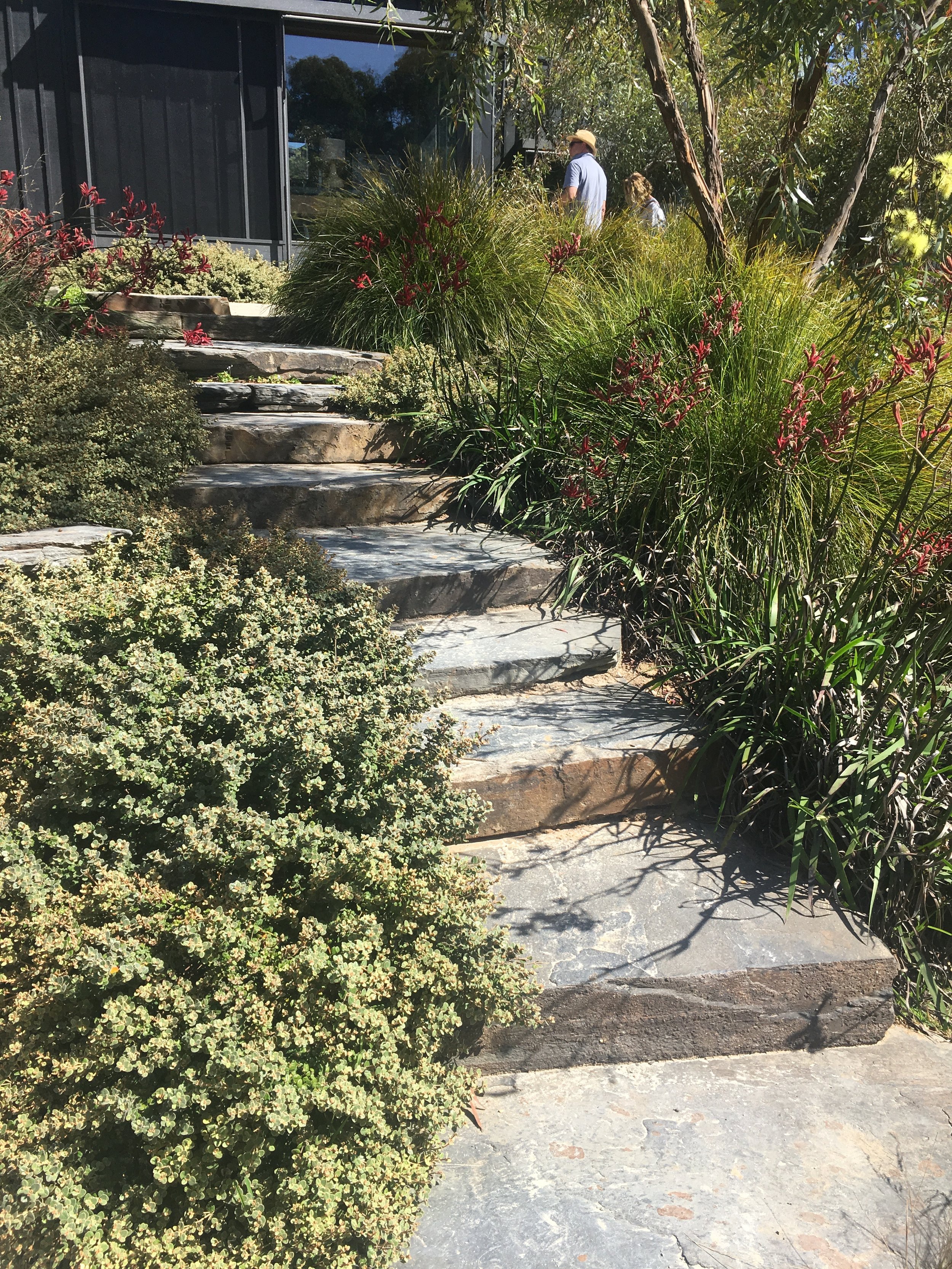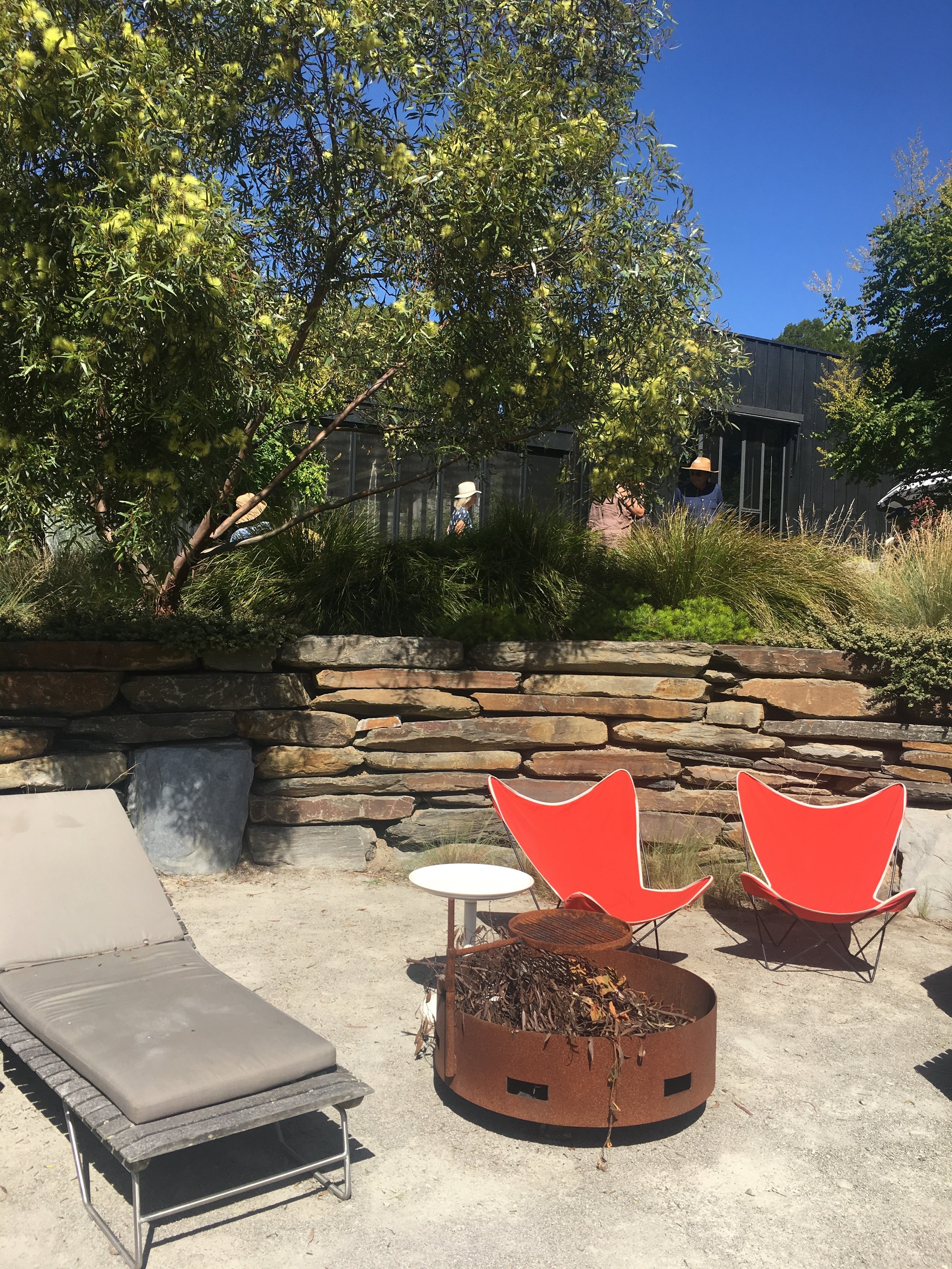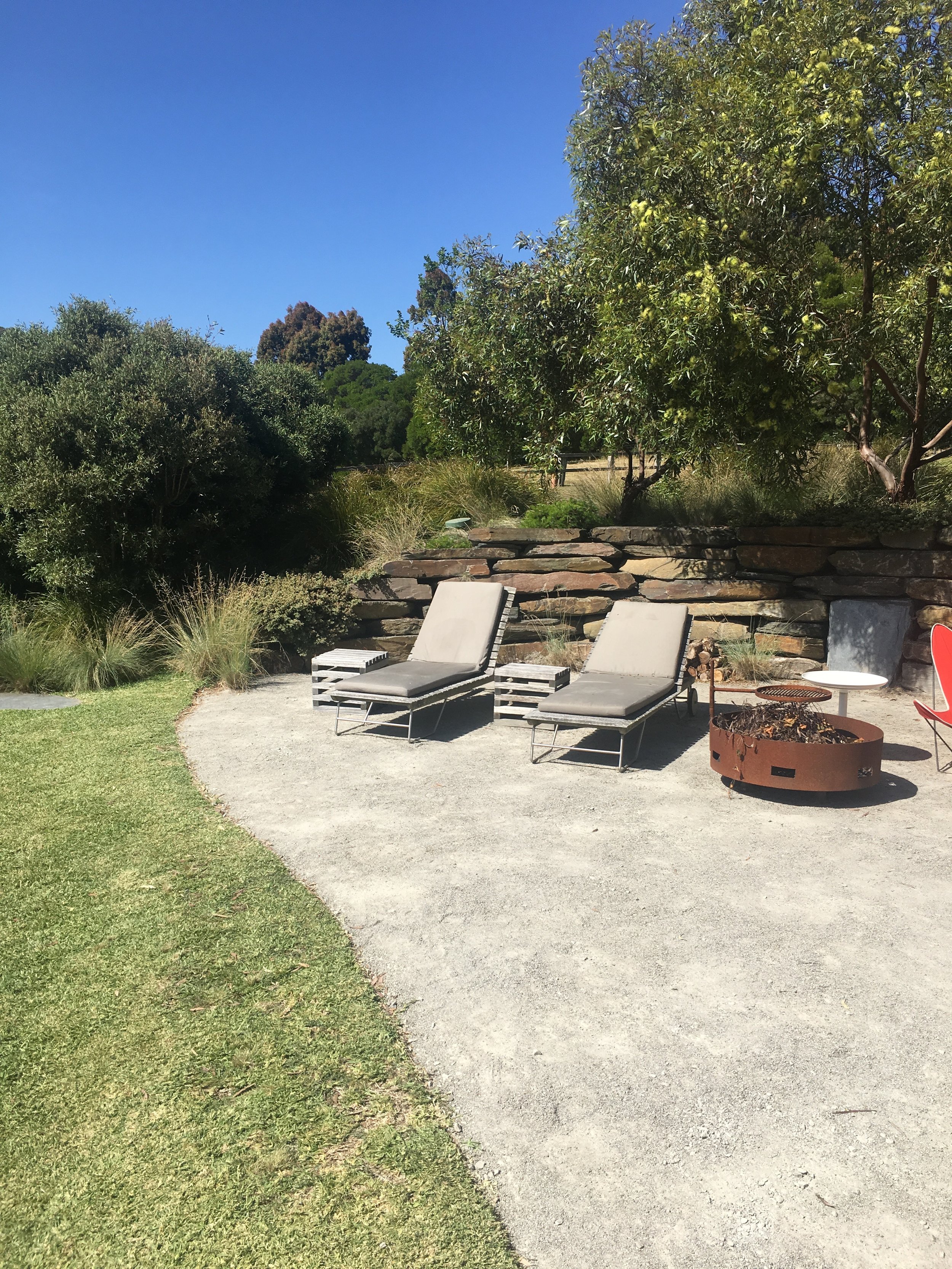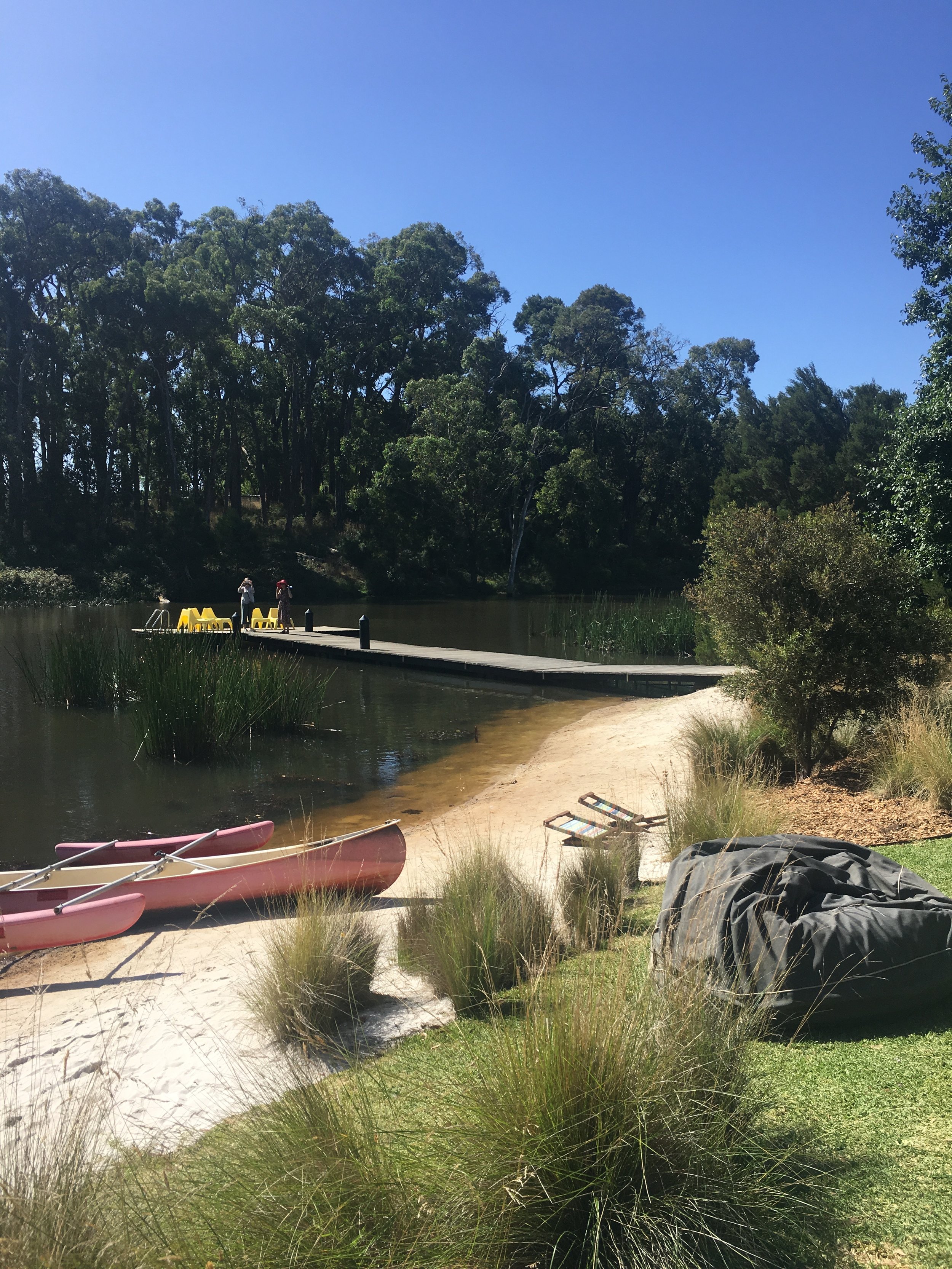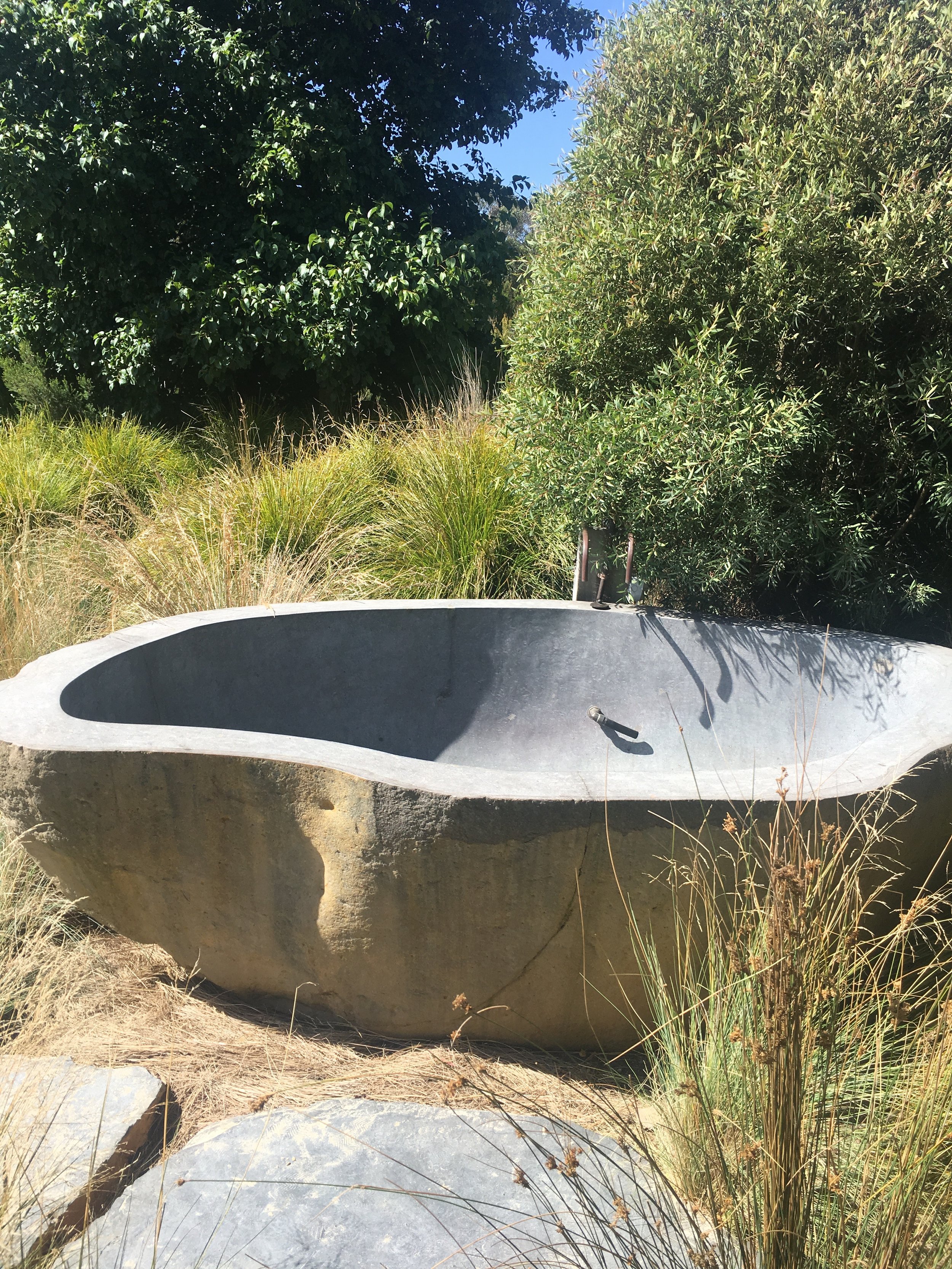I recently had the opportunity to visit three gardens on Victoria’s Mornington Peninsular. Located less than an hour south of Melbourne, the peninsular is an eclectic mix of opulent holiday homes, beach shacks and gastro pubs. The diverse landscape is also spectacular, ranging from sheltered beaches along the bays to the wild and windy cliffs of Back Beach (the kind of place you can lose a Prime Minister). The area is also known for its picturesque vineyards, rugged olive groves and stunning private gardens. The Peninsula also experiences sweltering Summers, icy Winters and gail force salty winds, so it is not the place you can easily garden. Gardeners have two choices; either shield themselves from the elements and close themselves off behind tall Cypress Hedges, or choose to embrace the challenges of the Peninsular. Rising to the demands of the later can facilitate the creation of exciting, vibrant and often quirky gardens.
Fiona Brockhoff has chosen to embrace the challenges.
Coastal location
The three gardens, all designed by Fiona Brockhoff, have a lot of similarities. The gardens make use of reclaimed pier timbers, natural stone, crushed rock and a hardy pallet of native and exotic plants. However it is the subtle differences between the gardens that I would like to focus on, which contribute to each having a unique Sense of Place.
Karkalla Garden
The first garden I visited was Karkalla This is Fiona's own garden, and with views to Bass Straight, it also has the most challenging conditions of the three gardens. I love to see designer’s home gardens, to discover what they create for themselves without the constraints and considerations of a client. The garden provides an insight into Fiona's creative mind and personality. Parts of the garden are reminiscent of Sydney's ‘Sculpture by the Sea’, with Fiona displaying art work, including the ‘Koonya Beach Columns’ by New Zealand artist, Chris Booth. Set against ocean views and almost wild coastal plantings, the columns are perfectly suited to their location.
Koonya Beach Columns
As you move closer to the house, the sculptures are reduced in scale and take on a more relaxed feel, and there is a colorful sculpture of thongs and another of washed up bottles. Placed about the garden there are also old crab-pots and piles of shells. All the sculptures add to the beach charm of the garden, without being twee or overly sentimental.
To the untrained eye, the garden could look whimsical, devoid of “rhyme nor reason” as to the placement of paths and plants. The garden shows restraint, however, using the regulatory lines of the home to locate stone walls and gravel courtyards. By dividing the space in relation to the home’s walls and protrusions, the garden takes on a subtle charm that feels effortless. A sense of mystery and discovery is created by using parallel walls and narrow paths which open out to the ocean views or one of the multiple glades sheltered by Coastal Tea Trees and Sheoaks.
Narrow steps open to ocean views
The native and exotic plants in Fiona's coastal gardens are all perfectly suited to the conditions, and you are kept guessing as to which plants are remnant, and which have been installed as part of the new design. There is also a yin and yang method of pruning, with some plants clipped into tight circular forms, and others pruned to maintain their naturally wild character. The distinction between clipped and unclipped is more pronounced at Karkalla than the other gardens I visited. The contrast between forms and habit add to the sculptural look of the garden, whilst also creating a sense of balance with the surrounding landscape.
Arnott Street Garden
The Arnott Street garden is only a few blocks away from Karkallain Sorento. With its sheltered position, pool and sweeping manicured lawn, it feels more suburban and a world away from Karkalla. The plant selection is similar to Karkalla, with Poa labillardieri and Formium tanex dominating the garden and interspersed with clipped Correa alba. Compared to Karkalla, the way the plants are used in this house is wildly different. Karkalla uses the plants in a more architectural way, and they are displayed in small groups or as individual accents in the garden. At Arnott Street, the plants are used for their volume and ability to fill the space. The manicured lawn provides variation in form and contrasts the drifts of Poa and Flax, resulting in a garden which requires far less topiary forms to create a sense of balance.
The garden beds are clearly defined, with steel edging and, unlike the straight lines of Karkalla, most of the structural features are curvy and follow the lay of the land. The rhythmical flow between spaces and the canopy of coastal Banksia (Banksia integrifolia) creates a gentle, welcoming garden. Interestingly, the property has three homes, housing different generations with different needs. The garden successfully and subtly divides the space, creating privacy without compromising unity and balance.
Main Ridge Garden.
Main Ridge is a little further inland from the other two gardens. It is an area known for Cypress windbreaks and rolling hills. This garden doesn't receive the full brunt of its coastal location, and a garden friendly microclimate is created by the cooling effect of the large and picturesque dam. The first thing you notice here is that the foliage has gone from the coastal grey of the previous two gardens to a more green spectrum. The plants are still hardy, with grassy or clipped textures and sculptural forms, however the subtle change of colour indicates more gentle conditions and deeper soils. Lomandra longifolia Tanika andPoa labillardieriare used in swathes, with Red Kangaroo Paw used as a foliage accent and a splash of colour.
The garden still makes artful use of Sheoaks, however the grey and masculine Allocasurina verticillata of the Sorento gardens have given way to the softer green tones of A. littoralis. Sculptural forms are created by the trunks and weeping habit Eucalyptus macranthaas well as clipped shrubs, including Callistemon and Correa. The addition of the deciduous Koelreuteria paniculatais surprising, however it is a logical response to the need for Summer shade and Winter sun.
Koelreuteria paniculata
Like the other two gardens, the Main Ridge Garden responds well to its location and helps to anchor and almost hide the new modernist home.
View towards the house
To achieve the effortless charm and connection of all three gardens, Fiona has responded to the Sense of Place that exists in each location. Collaboration between the site, people who use the garden and the designer is evident. You can see the masterful way each garden responds both to its location as well as the needs and personality of the people who use the gardens.
The gardens were opened through Open Gardens Victoria to read more visit
https://opengardensvictoria.org.au/archive




